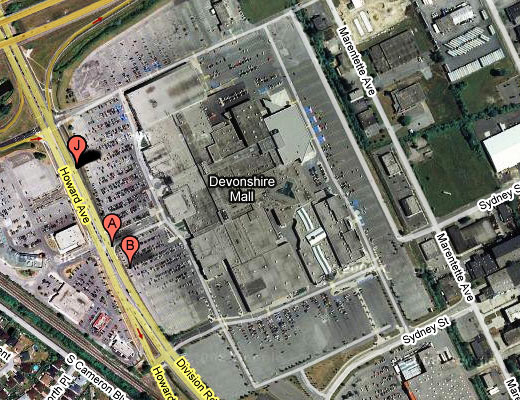
WorldChanging recently wrote about some malls in the US that died (or are in the process of dying) and what was being done with the space afterwards. It seems that some malls are being redesigned as mixed-use developments, with arts/community centres and housing. Reusing existing spaces for this type of redevelopment and activity is surely positive, but it seems that some of these projects are being billed as new downtowns. As most malls are built away from other other development, and many are designed around (or rather within) fields of parking lots, should these spaces really be considered a new “downtown”?
If this happened in Windsor, what might be the results? Devonshire Mall is over 1,000,000 square feet. That’s a lot of space for apartments, studios, galleries, shopping, markets, even a school. However, would this type of development just take the focus away from fixing our downtown (or is it already a lost cause?) Also, more questions would certainly be raised about a private space functioning as public space, as even the sidewalks of a “street” would suddenly be under private ownership. Other spaces in the city like old factories, the Home Depot right beside the mall, and even shutdown churches all seem like they could foster a good type of growth by converting those spaces into (hopefully) accessible places for artists, community groups, and housing. How do we start?
[via]















